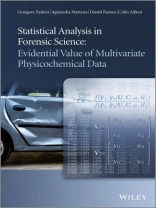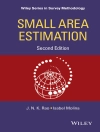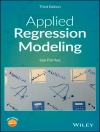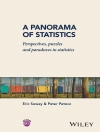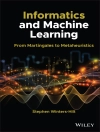A practical guide for determining the evidential value of
physicochemical data
Microtraces of various materials (e.g. glass, paint, fibres, and
petroleum products) are routinely subjected to physicochemical
examination by forensic experts, whose role is to evaluate such
physicochemical data in the context of the prosecution and defence
propositions. Such examinations return various kinds of
information, including quantitative data. From the forensic point
of view, the most suitable way to evaluate evidence is the
likelihood ratio. This book provides a collection of recent
approaches to the determination of likelihood ratios and describes
suitable software, with documentation and examples of their use in
practice. The statistical computing and graphics software
environment R, pre-computed Bayesian networks using Hugin
Researcher and a new package, calcu Lato R, for the
computation of likelihood ratios are all explored.
Statistical Analysis in Forensic Science will provide an
invaluable practical guide for forensic experts and practitioners,
forensic statisticians, analytical chemists, and
chemometricians.
Key features include:
* Description of the physicochemical analysis of forensic trace
evidence.
* Detailed description of likelihood ratio models for determining
the evidential value of multivariate physicochemical
data.
* Detailed description of methods, such as empirical
cross-entropy plots, for assessing the performance of likelihood
ratio-based methods for evidence evaluation.
* Routines written using the open-source R software, as
well as Hugin Researcher and calcu Lato R.
* Practical examples and recommendations for the use of all these
methods in practice.
قائمة المحتويات
Preface xiii
1 Physicochemical data obtained in forensic science
laboratories 1
1.1 Introduction 1
1.2 Glass 2
1.3 Flammable liquids: ATD-GC/MS technique 8
1.4 Car paints: Py-GC/MS technique 10
1.5 Fibres and inks: MSP-DAD technique 13
References 15
2 Evaluation of evidence in the form of physicochemical data
19
2.1 Introduction 19
2.2 Comparison problem 21
2.3 Classification problem 27
2.4 Likelihood ratio and Bayes’ theorem 31
References 32
3 Continuous data 35
3.1 Introduction 35
3.2 Data transformations 37
3.3 Descriptive statistics 39
3.4 Hypothesis testing 59
3.5 Analysis of variance 78
3.6 Cluster analysis 85
3.7 Dimensionality reduction 92
References 105
4 Likelihood ratio models for comparison problems 107
4.1 Introduction 107
4.2 Normal between-object distribution 108
4.3 Between-object distribution modelled by kernel density
estimation 110
4.4 Examples 112
4.5 R Software 140
References 149
5 Likelihood ratio models for classification problems
151
5.1 Introduction 151
5.2 Normal between-object distribution 152
5.3 Between-object distribution modelled by kernel density
estimation 155
5.4 Examples 157
5.5 R software 172
References 179
6 Performance of likelihood ratio methods 181
6.1 Introduction 181
6.2 Empirical measurement of the performance of likelihood
ratios 182
6.3 Histograms and Tippett plots 183
6.4 Measuring discriminating power 186
6.5 Accuracy equals discriminating power plus calibration:
Empirical cross-entropy plots 192
6.6 Comparison of the performance of different methods for LR
computation 200
6.7 Conclusions: What to measure, and how 214
6.8 Software 215
References 216
Appendix A Probability 218
A.1 Laws of probability 218
A.2 Bayes’ theorem and the likelihood ratio 222
A.3 Probability distributions for discrete data 225
A.4 Probability distributions for continuous data 227
References 227
Appendix B Matrices: An introduction to matrix algebra
228
B.1 Multiplication by a constant 228
B.2 Adding matrices 229
B.3 Multiplying matrices 230
B.4 Matrix transposition 232
B.5 Determinant of a matrix 232
B.6 Matrix inversion 233
B.7 Matrix equations 235
B.8 Eigenvectors and eigenvalues 237
Reference 239
Appendix C Pool adjacent violators algorithm 240
References 243
Appendix D Introduction to R software 244
D.1 Becoming familiar with R 244
D.2 Basic mathematical operations in R 246
D.3 Data input 252
D.4 Functions in R 254
D.5 Dereferencing 255
D.6 Basic statistical functions 257
D.7 Graphics with R 258
D.8 Saving data 266
D.9 R codes used in Chapters 4 and 5 266
D.10 Evaluating the performance of LR models 289
Reference 293
Appendix E Bayesian network models 294
E.1 Introduction to Bayesian networks 294
E.2 Introduction to Hugin Researcher TM software 296
References 308
Appendix F Introduction to calcu Lato R software 309
F.1 Introduction 309
F.2 Manual 309
Reference 314
Index 315
عن المؤلف
Grzegorz Zadora, Institute of Forensic Research, Krakow, Poland.
Daniel Ramos, Telecommunication Engineering, Universidad Autonoma de Madrid, Spain.
